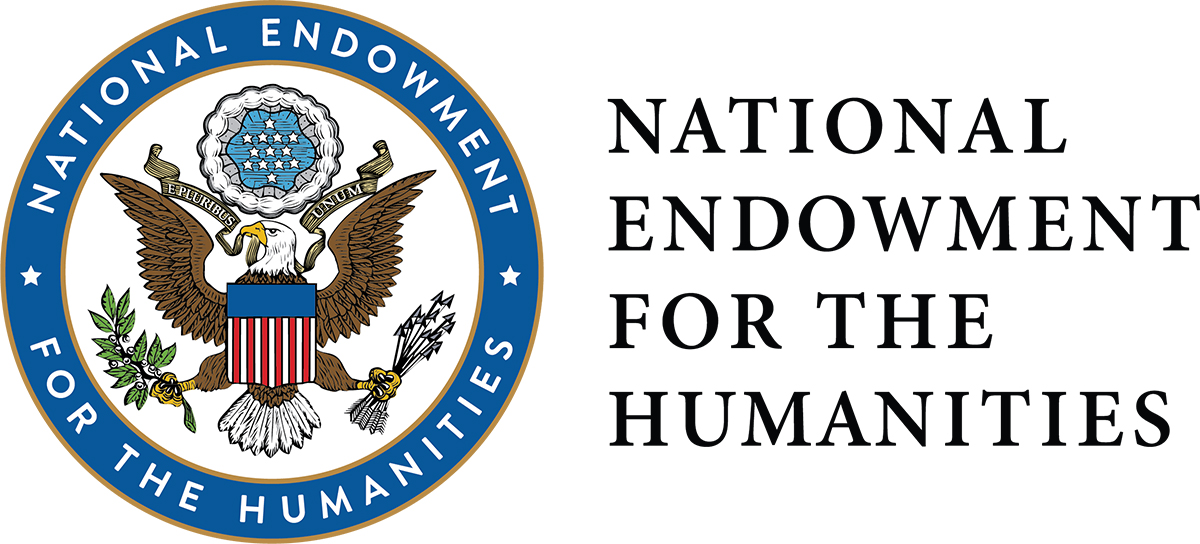FUNDING CUTS IMPACT CT HUMANITIES: Help CT Humanities navigate recent funding cuts and continue our vital work across Connecticut. All donations made to CTH will be matched dollar-for-dollar up to $50,000. Donate today!
Now Viewing:
Food and Drink
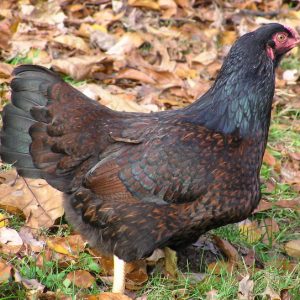
Jacques and Therese Makowsky and the Development of the Cornish Game Hen
In 1950, the Makowskys crossed a white Cornish cock with a White Plymouth Rock hen to produce a small hybrid that they patented as the Rock Cornish Game Hen.
Read
A New Source of Farm Labor Crops Up in Wartime
During times of war, in Connecticut, as in many other states, women became an increasingly important resource in food production.
Read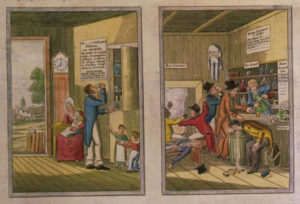
The Living Actually Haunted Many Connecticut Taverns – Who Knew?
Early Connecticut laws deemed anyone who spent excessive time in taverns as a “tavern haunter” and subjected them to fines and ridicule.
Read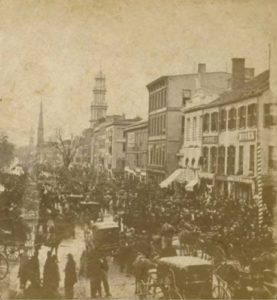
When Elections in Hartford Were a Piece of Cake
Unlike today, in the 18th and 19th centuries, Election Day met with great celebration.
Read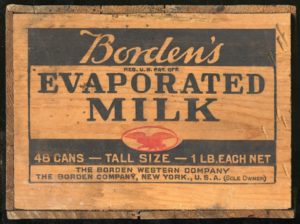
Evaporated Milk’s Connecticut Connection – Who Knew?
In, 1856 businessman Gail Borden Jr. opened the first commercial milk condensery at Wolcottville (now Torrington).
Read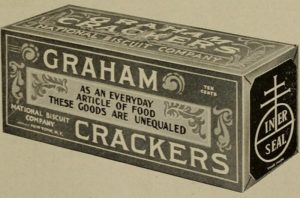
Sylvester Graham: Progressive Advocate for Healthy Living
Sylvester Graham is known as much for his sermons on morality as his advocacy of a healthy lifestyle and his creation of the graham cracker.
Read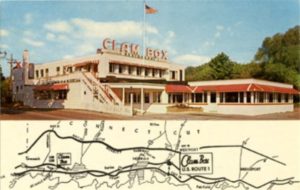
Lobsters and Oysters and Clams: A Short History of Seafood in Connecticut
The ocean’s bounty has been savored along the Connecticut coastline for as long as humans have been around to bring it on shore.
Read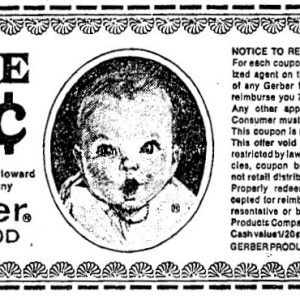
Birthplace of the Gerber Baby – Who Knew?
Westport’s artist Dorothy Hope Smith used her neighbor, Ann Turner, as inspiration for her iconic Gerber Baby trademark drawing.
Read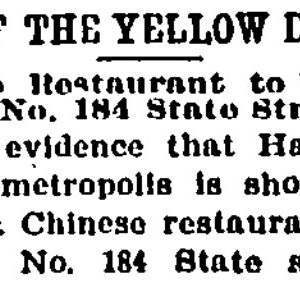
At the Sign of the Yellow Dragon: Hartford’s First Chinese Restaurants
The first Chinese restaurant opened in Hartford in 1898 and evolved as immigrants from different parts of China introduced new tastes.
Read
Orange: Connecticut’s Candy Dispenser
Orange, Connecticut is home to one of the most revered, nostalgia-inspiring candy companies in the United States, PEZ.
Read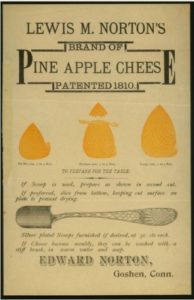
The Story of Pineapple Cheese
On a farm in West Goshen, Lewis Norton made one of the more unusual and popular foods of the 19th century, pineapple cheese.
Read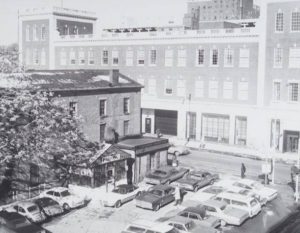
Louis’ Lunch and the Birth of the Hamburger
In 1900, in answer to a customer’s rush order for something “quick and delicious,” Louis Lassen of New Haven served up a meal that is credited as being the first hamburger.
Read
Mounds Candy Bar Involved in Espionage – Who Knew?
A storied Naugatuck business had its own “navy” and that it performed espionage services for the United States government during World War II.
Read
Benjamin Silliman and Soda Water – Who Knew?
Yale’s first professor of chemistry, Benjamin Silliman, was also the first American to produce soda water in bulk.
Read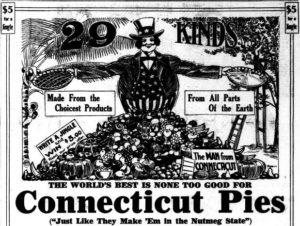
The Pie Man from Georgetown and the Connecticut ~ Copperthite Pie Company
More than just a wagon driver and Civil War veteran, Henry Copperthite built a pie empire that started in Connecticut.
Read
The First US Can Opener – Today in History: January 5
On January 5, 1858, Waterbury native Ezra J. Warner invented the first US can opener.
Read
Beechmont Dairy: Bridgeport’s Ice Cream to Die For
Joseph Niedermeier Sr. founded the Beechmont Dairy in Bridgeport in 1906—a popular local business for over 60 years.
Read
The Slow Demise of Prohibition in Wilton
It is only in recent decades that the people of Wilton moved forward, albeit divisively, with plans to allow the sale of alcohol in their town.
Read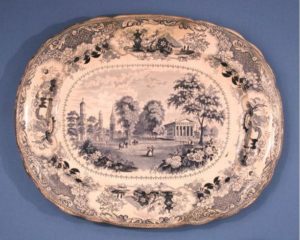
Setting the Table in Historic Style: Connecticut Views on Staffordshire China
Engravings of Hartford, Daniel Wadsworth’s estate, the New Haven Green, and other sites around the state adorned British chinaware made for the US market.
Read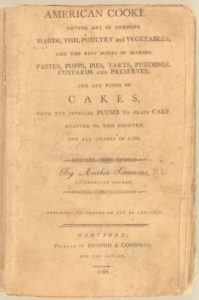
Give Thanks for American Cooking
Widely accepted as the first cookbook written by an American, Amelia Simmons’s American Cookery was published by Hudson & Goodwin of Hartford in 1796.
Read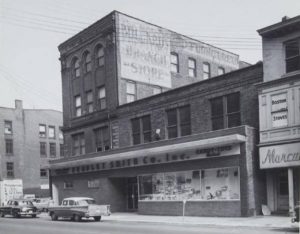
New Haven Gives the Lollipop its Name – Today in History: October 13
On October 13, 1931, the name “Lolly Pop” was officially registered to the Bradley Smith Company of New Haven by the US Patent and Trademark Office.
Read
From Aprons to Lab Coats: The Art and Science of Home Economics
In 1893 the Storrs Agricultural College (the precursor to the University of Connecticut) began training women in domestic science, the discipline that would later be called home economics.
Read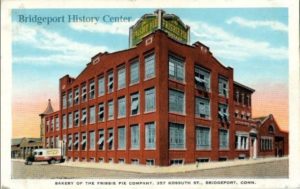
A Pie Tin’s Soaring Sales
Tins used to hold pies at William Frisbie’s pie company in Bridgeport in the late 1800s reportedly provided the inspiration for Wham-O’s most popular toy, the Frisbee.
Read
Andover’s Award-Winning Creamery
Started in 1886 by town residents, the Andover Creamery Corporation typified cooperative agricultural enterprises of the late 19th and early 20th centuries.
Read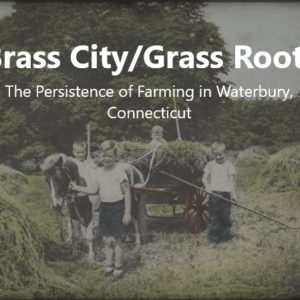
Brass City/Grass Roots: Farming as Recycling: The Becces in the North End
This article is part of the digital exhibit “Brass City/Grass Roots: The Persistence of Farming in Waterbury, Connecticut”
Read
Brass City/Grass Roots: Struggles and Decline
This article is part of the digital exhibit “Brass City/Grass Roots: The Persistence of Farming in Waterbury, Connecticut”
Read
Brass City/Grass Roots: Food Marketing and Processing as Part of Civic Culture
This article is part of the digital exhibit “Brass City/Grass Roots: The Persistence of Farming in Waterbury, Connecticut”
Read
Brass City/Grass Roots: What Makes a Farm a Farm? Other Sites of Food Production in Waterbury
This article is part of the digital exhibit “Brass City/Grass Roots: The Persistence of Farming in Waterbury, Connecticut”
Read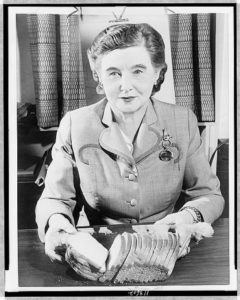
Pepperidge Farm Opens Bakery – Today in History: July 4
On July 4, 1947, Margaret Rudkin of Fairfield opened a modern commercial bakery in Norwalk and gave it the name of her small bakery, Pepperidge Farm.
Read
Bigelow Tea–A Connecticut Tea Party
The Bigelow Tea Company was started as a small family business in Manhatten before moving to Norwalk and then Fairfield.
Read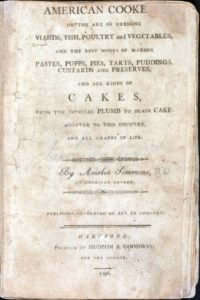
Amelia Simmons Adds a Uniquely American Flavor to Cooking
In 1796, Amelia Simmons authored American Cookery—believed to be the first cookbook authored by an American published in the United States.
Read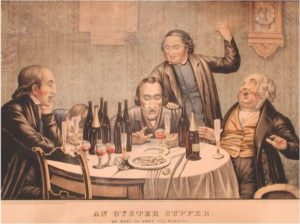
Any Month with an “R” in It: Eating Oysters in Connecticut
Lack of refrigeration and higher bacteria counts in tidal waters once made summer months a dangerous time to eat oysters.
Read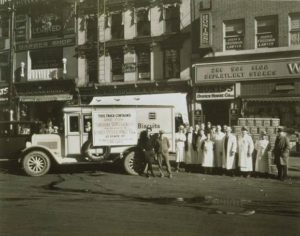
Oystering in Connecticut, from Colonial Times to the 21st Century
Why tasty Crassostrea virginica deserves its honored title as state shellfish.
Read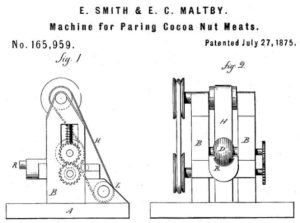
North Branford Vied for the Title of “Shredded Coconut Capital of the World” – Who Knew?
Patents granted to North Branford residents included one for a device used for paring coconut meats in 1875.
Read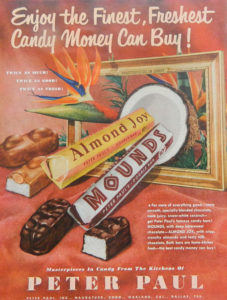
A Candy Bar Empire in Naugatuck
Almond Joy and Mounds were two of the most popular candy bars sold by Naugatuck’s Peter Paul Manufacturing Company, an enterprise begun by Armenian immigrant Peter Halajian.
Read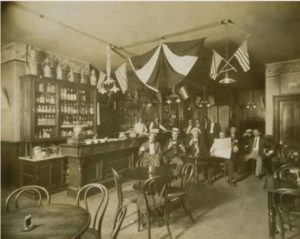
Union Brew
Brewery strike in 1902 leads some to drink ginger ale, rather than beer, as a sign of solidarity.
Read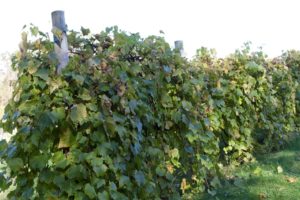
Raise a Glass to Winemaking in Connecticut
The Colony’s first settlers produced wine and spirits, but it would not be until the 1970s that Connecticut could grow and sell its harvest.
Read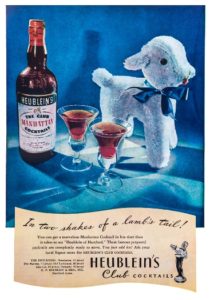
Just Pour Over Ice – Who Knew?
The Heublein Restaurant served its thirsty customers pre-mixed cocktails that became so wildly popular they had to build a distillery just to meet demand.
Read
Hidden Nearby: The Bantam Lake Ice House
Bantam Lake served a vital function as a supplier of ice that local residents used to preserve food when temperatures began to rise.
Read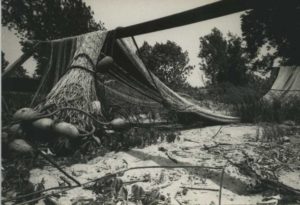
A Tale of Shad, the State Fish
The aquatic inhabitant, shad, has a long history of influencing foodways, income, and culture in the region.
Read
Tavern Signs Mark Changes in Travel, Innkeeping, and Artistic Practice
In colonial times, tavern signs beckoned weary travelers to places of rest and entertainment, but by the early 1900s collectors prized them as folk art and relics of a bygone era.
Read
When Milk Powered Watertown’s Industry
The story of the dairy industry in Watertown mirrors that of many industries in Connecticut.
ReadMore Articles


